The EUIMWP (CA 16220) COST Action (https://euimwp.eu/), Chaired by Prof. José Capmany in the Universitat Politècnica de València (Spain), is in the middle-end of its third Grant Period, out of the five that will last in total. From the last newsletter (May 2018), the following activities have been performed:
MEETINGS
GP2:
- 2nd Core Group meeting in Valencia (Spain), 29th May 2018. The Core Group members discussed about the progress of the Action in both financial and scientific terms, hosted by Prof. Capmany.
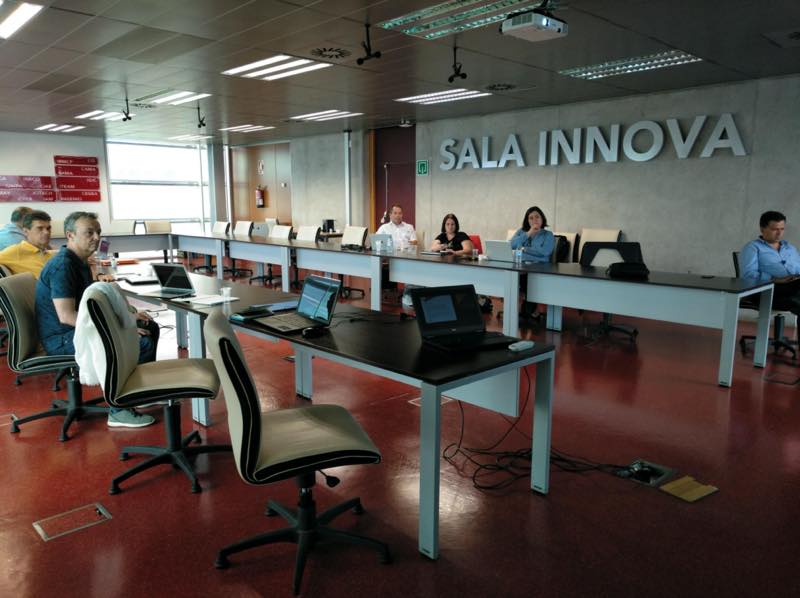
- As a dissemination activity, the action was presented to the broad European and global community in the field of Integrated Optics in the invited paper at the European Conference on Integrated Optics (http://www.ecio-2018.org/) by the Action Chair, Prof. José Capmany.
- Prof. Anne-Laure Billabert presented the EUIMWP (CA 16220) COST Action in the Conference of Photonic-Microwave Club of the Optic French Society, in Toulouse, France, on July 2nd, 2018. Around 65 French participants were informed about the existence of this Action and its activities thanks to her poster.

- Another dissemination meeting took place in CSNDSP 2018 in Budapest (Hungary). Prof. Andreas Stohr, a MC member from Germany and the WG3 leader, participated as a Plenary speaker in CSNDSP 2018 (11th IEEE/IET International Symposium on Communication Systems, Networks and Signal Processing: http://csndsp2018.com/), in Budapest, giving a talk about the Action, disseminating thus the existence of this networking among researchers on this field.
- 2nd WG1 and WG5 meetings in Götenborg (Sweden). The WG1 and WG5 participants met in Chalmers University of Technology (Götenborg, Sweden) last 27th and 28th of September, 2018. Chaired by Prof. Geert Morthier and Prof. Zhongxia Simon He, they discussed about the draft specifications of various microwave photonic PICs (WG1) and PICs used in vehicle communication and automotive radar application (WG5). A visiting tour was organized to visit Chalmers Clean room, Swedish national THz lab and Chalmers Opto Lab.

- 2nd WG4 meeting in Chania (Greece). The WG4 met on the last day of the ICSO 2018, on October 12th, 2018, separately from the conference. Prof. Chris Roeloffzen was the Local Organiser. There were several presentations and a round table session at the end.
- Joint 3rd MC and 2nd WG2, WG3 and WG6 meetings in Toulouse: Toulouse (France). The Management Committee of the EUIMWP COST Action had their 3rd meeting in Toulouse (France), on October 25th, after the end of the MWP 2018 Conference. On the following day, the WG2, W3 and WG6 had their 2nd meeting. Prof. Anne-Laure Billabert took a great part of the organisation of this event.
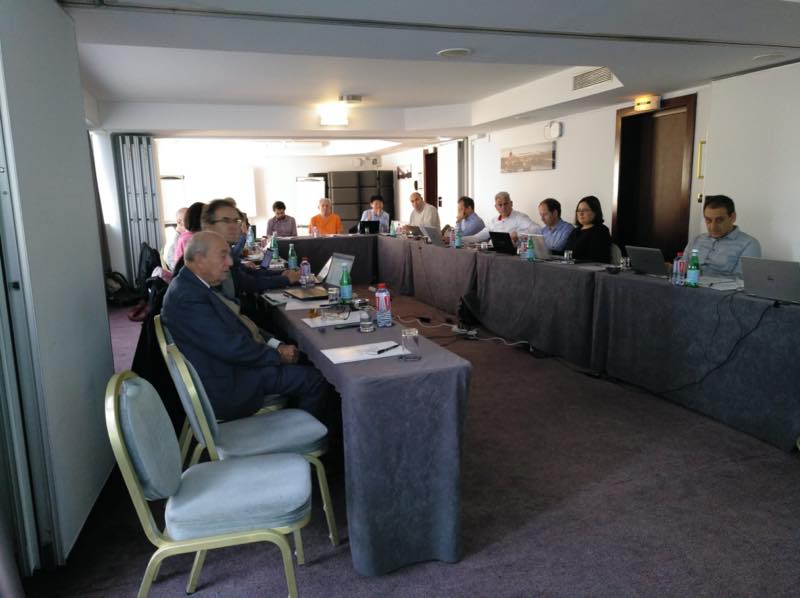
- 3rd WG1, WG2, WG3, WG5 and WG6 meetings in Aveiro (Portugal). During January 31st and February 1st, 2019, these 5 working groups met in order to put in common their specific progress. Thanks to Prof. Antonio Teixeira and Catia Pinho for the organisation!

- 1st PhD and ECI meeting in Ljubljana (Slovenia). This meeting took place also during Jan 31st and Feb 1st, 2019. Twenty-two young participants joined the event. After presenting each research work on the first day, the participants had an interactive session and established potential collaborations. They were divided into three groups: devices, applications and new materials, with no clear divisions though, as the participants were able to dynamically interact in between these topics. Prof. Bostjan Batagelj hosted this event and, helped by Prof. Eszter Gerhatné Udvary, made a great job with the organisation!

GP3:
- MC and WG meetings in Prague, May 27th to 29th, 2019. The MC met in Prague for the 4th time, with 22 countries represented. The MC members were informed about the progress of the Action, in terms of budget expenditure during the last Grant Period (GP2), activities planned during GP3, scientific development, etc. During the two following days, the members of the 6 Working Groups got together again. The WG leaders presented their progress and the participants had also the chance to have a break-out session, where they were divided into smaller groups, discussing in parallel. Prof. Stan Zvanovec organised this successful event, thank you!

- Special session on “Integrated microwave photonics in optical access networks” during FOAN 2019. During the 8th International Workshop on Fiber Optics in Access Networks (FOAN), a successful special session on Integrated Microwave Photonics in Access Networks was organised by EUIMWP. A two-day event took place in Sarajevo, Bosnia & Herzegovina, 2nd – 3rd September 2019. It involved contributions by 14 speakers, from 10 countries, who presented solutions for the convergence of radio and optical access networks in a physical layer. The presentations covered devices, sub-systems and system solutions for data and synchronisation transfer. According to the special session chairs, Dr. Eszter Udvary Gerhátné and Dr. Bostjan Batagelj, integrated microwave photonics will bring new functionalities to access networks as well as enabling higher bandwidths and lower latencies. The fruitful discussion during the special session covered cost reduction and increasing the energy efficiency in optical access networks. The event was also a good opportunity for networking and establishing new research ideas and collaborations. Thanks to Prof. Bostjan Batagelj for organising and chairing the special session and also to Prof. Edvin Skaljo for being the Local Organiser.
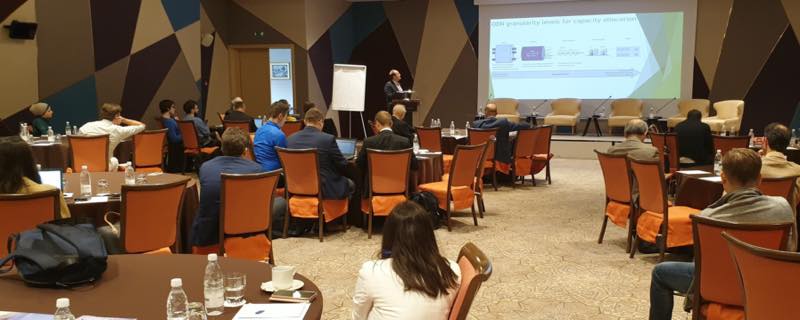
- 2nd PhD and ECI meeting in Thessaloniki (Greece). The 2nd PhD and ECI meeting of the EUIMWP COST ACTION (CA16220) took place in Thessaloniki on September 9th, 2019, one day before the beginning of the Training School “Emerging technologies for 5G networks”. It was organized by the ECI Manager of the Action, Dr. Christos Vagionas from the Wireless and Photonic Systems and Networks (WinPhoS) research group of the Aristotle University of Thessaloniki. Fifteen young participants attended the meeting, during which they presented their research progresses, and took part in two round tables, pointing out challenges and solutions, and establishing or reinforcing collaborations.

TRAINING SCHOOLS:
GP2:
- The 2nd EUIMWP Training School “3rd ePIXfab Silicon Photonics Summer School” took place in Ghent (Belgium) from June 11th to 15th, 2018. This Action offered a fixed grant to 16 of the 100 trainees attending the course. The granted trainees were from Germany, Ireland, Italy, Slovenia and Spain. They enjoyed high quality lectures from 24 trainers, 9 of which were reimbursed by this Action. Prof. Abdul Rahim and his team in Ghent University were the Local Organisers, thank you!
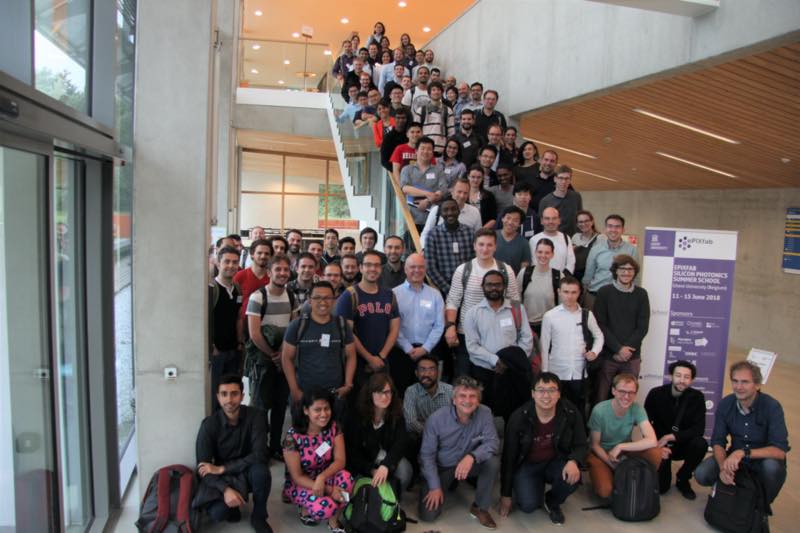
- The Training School “Integrated Microwave photonics: from idea to chips” was held in Enschede (the Netherlands), from 26th of February to 1st of March, 2019. It was organised by Prof. Chris Roeloffzen and his group in Lionix International. Nineteen trainees from 12 different countries attended the course, 17 of them with a grant by this Action. The 7 trainers were from the Local Organiser’s institution.

GP3:
- The Training School on “Emerging technologies for 5G networks” took place at the Aristotle University of Thessaloniki, at the facilities of the Wireless and Photonic Systems and Networks (WinPhoS) research group (http://winphos.web.auth.gr/), from Sep 10th to 14th, 2019. The Training school was organized by Dr. Christos Vagionas, Dr. George Kalfas and Prof. Amalia Miliou, and co-funded by the 5G-PHOS H2020 5GPPP Phase II (GA No. 761989). It was attended by 36 trainees and 21 trainers. This Action granted 16 of the trainees, who came from 11 different countries, and reimbursed 6 trainers.

- The Training School “Photonic Integration for Aerospace, Satellite & Radar Technology” took place in France from Feb 3rd to 5th, 2020, in Paris and Palaiseau. Organised by Prof. Anne-Laure Billabert, Prof. Daniel Dolfi and Prof. Stavros Iezekiel, it was attended by 27 granted trainees, coming from 12 countries, plus 34 local students. Fifteen trainers participated, being 5 of them reimbursed by this COST Action. The feedback from the participants was very positive, and they enjoyed a lot the lectures and the experience in general.

STSM
GP2:
- Catia Pinho, a PhD student from the Instituto de Telecomunicações, Universidade de Aveiro (Portugal) has spent 17 days in the Universitat Politècnica de València (Spain), working under the supervision of Prof. Pascual Muñoz in Photonic Integrated Circuits, Photonics Research Labs. During her STSM she worked on the design of photonic integrated circuits (PIC) for silicon nitride technologies and promoted current/future collaboration(s) between the two research groups.
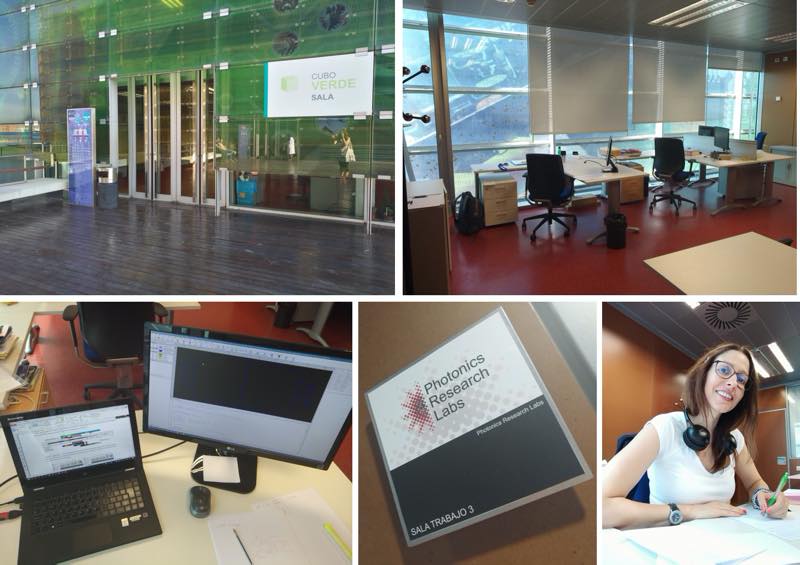
- Matthias Steeg, a PhD student from the University of Duisburg-Essen (UDE, Germany) has recently visited the lab of Stavros Iezekiel, in the University of Cyprus ( UCY, Latsia, Cyprus) during 29 days, with the aim of developing and fabricating a 5G 26 GHz photonic beam steering transmitter. Therefore, PCB leaky-wave antennas, produced at UCY during the STSM, are integrated with microwave photodiodes from UDE to enable changing the beam direction of the transmitter remotely through photonic techniques employing tunable lasers.
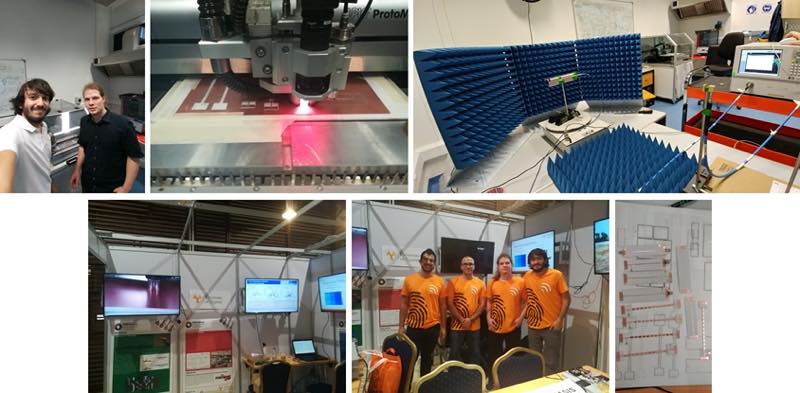
- Jan Bohata, a postdoc researcher from Czech Technical University in Prague, Faculty of electrical engineering (Czech Republic), made a stay in the Universitat Politècnica de València (Spain), under the supervision of Prof. Beatriz Ortega, aiming to advanced methods in microwave photonics. During his mission, he worked on deployment of a free space optics (FSO) system in a microwave photonic link togehter with implementation of photonic mm-wave generation for frequency bands considered in 5G networks.
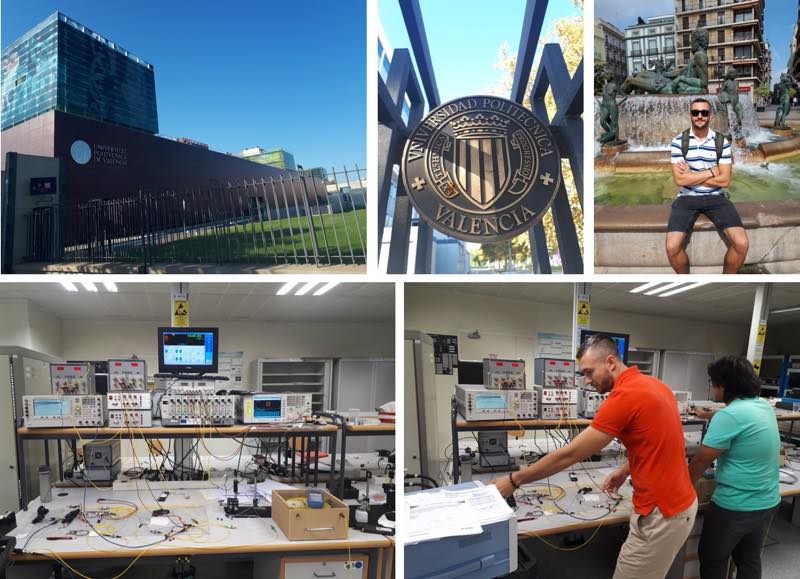
- Maina Moutaly, a PhD student from ESYCOM (Le Cnam, University of Paris-Est, ESIEE-Paris, France) has recently visited the team of Nathan Gomes, Communications Research Group in the School of Engineering and Digital Arts, at the University of Kent (Canterbury UK) during 25 days. The purpose was to perform an experimental performance evaluation of analogue radio-over-fiber for 5G waveform transport. The results obtained showed a promisingly high performance fronthaul using phase modulation with interferometric detection for the uplink and intensity modulation with direct detection for the downlink. Similar or, in some cases, even better performance was demonstrated for the phase modulated link compared to the intensity modulated one leading to a possible energy efficiency optimisation at the remote unit as the optical phase modulator does not require a bias supply.
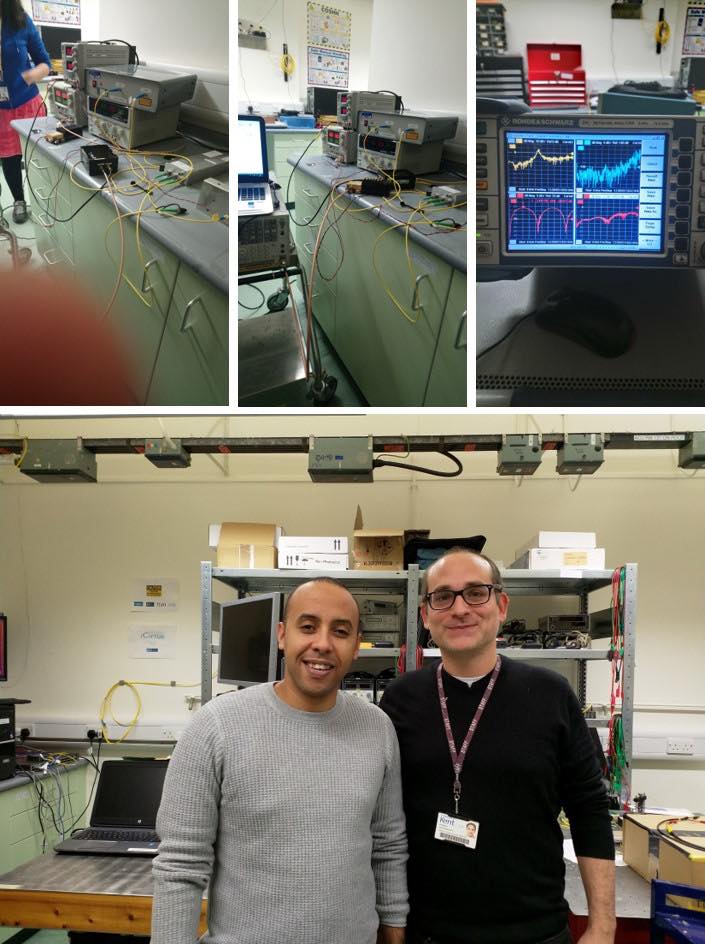
- Dr. Salim FACI, an associate professor from Le Conservatoire National des Arts et Métiers, Paris (France), visited Prof. Nathan Gomes and his team in the University of Kent, Canterbury (UK) from 12th to 16th November 2018 with the purpose of evaluation of radio over fiber performances for 5G fronthaul applications based on phase modulation and coherent detection. During this STSM, silicone photonic integrated circuits were defined as a potential solution for such analogue photonic systems. Future collaboration between the two intuitions was engaged on this way.
- Rui Min, a pre doctor researcher from ITEAM, Universitat Politècnica de València (Spain), made a stay in the Chalmers University of Technology (Sweden), under the supervision of Prof. Victor Torres Company, aiming to investigate the thermo-optic control of silicon rich silicon nitride high Q microresonators and microresonator frequency comb generation. During his mission, he worked on measure the thermo optics speed of silicon rich silicon nitride microresonators.
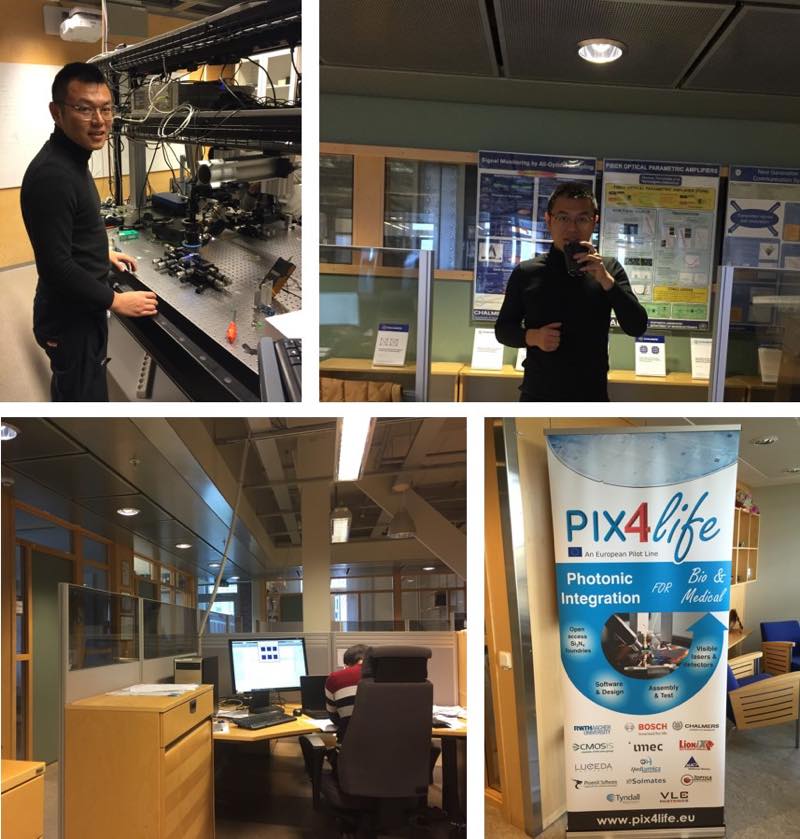
- Catia Pinho, from the Instituto de Telecomunicações, Universidade de Aveiro (Portugal), travelled back to Valencia to keep on working on the design structure optimization of photonic integrated circuits (PIC) for silicon nitride technologies.
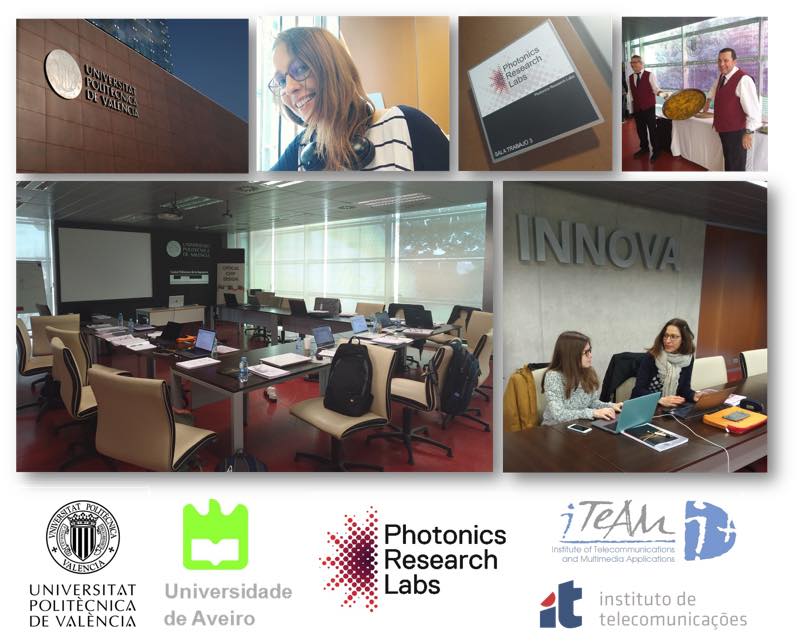
- Kyriakos Neophytou, a Ph.D. student from the University of Cyprus (Cyprus) has recently visited the Institute of Optoelectronics at the University of Duisburg-Essen (Germany) during 48 days, under the supervision of Prof. Andreas Stöhr. The purpose of the STSM was to investigate the implementation of backscattering Mobile Terminals (MTs) to an all-photonic FMCW system in order to simultaneously identify and locate the MTs. The experiments were successful and the researchers were able to simultaneously localize and identify the MTs with minimal signal processing power.
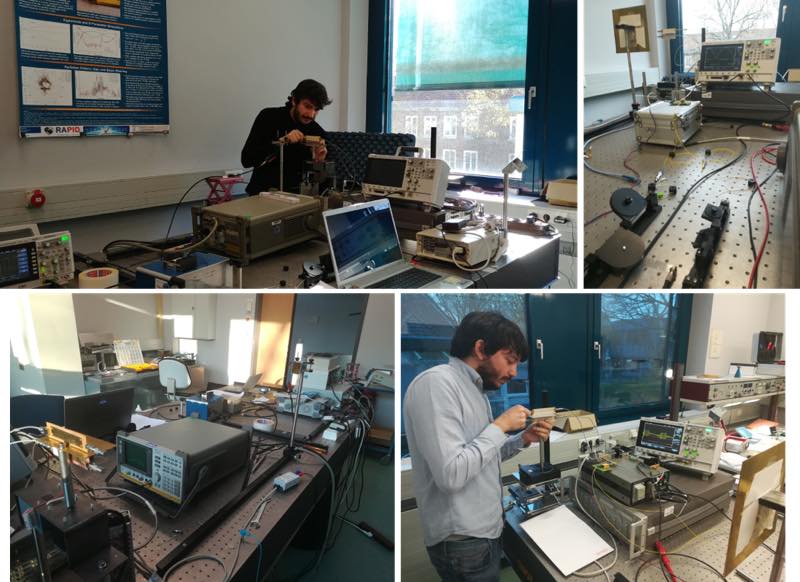
- Nada Badraoui, a PhD student from Budapest University (Hungary) travelled to the University of Duisburg-Essen (Germany). The 5G mobile network deployment goal is to provide 1-10 Gb/s wireless signal for the end user. For that purpose, polarization multiplexing (POL-MUX) can be utilized to double the bandwidth efficiency. At these bit rates, the polarization mode dispersion (PMD) becomes very problematic as a bit rate limiting factor. It influences the polarization cross talk and polarization extinction ratio (PER). We propose the application of single side-band Pol-Mux techniques for radio over fibre system achieving this way increased capacity. The performance of the orthogonal coherent polarization multiplexed (Pol-Mux) in a radio over fibre system for multi-user MIMO using linear polarized antennas technique is improved by using polarization beam splitter/combiner and polarization controller with different polarization phase shift, different fibres length, and different bit rate”.
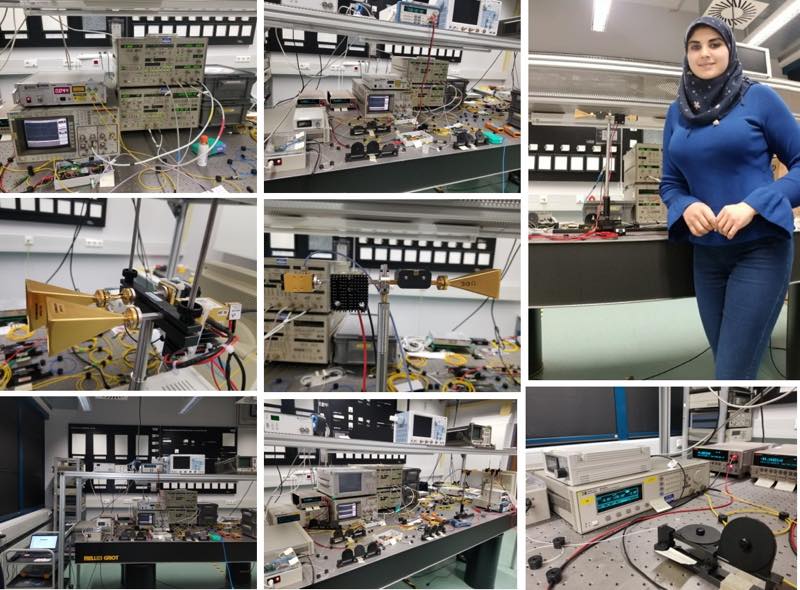
GP3:
- David Kóbor, from the Budapest University of Technology and Economics in Hungary, spent 6 weeks in the laboratory of Stavros Iezekiel in Nicosia to investigate the recent developments in the field of opto-electronic oscillators. They investigated multiple different concepts and architectures, such as class AB photonic links, and self-adaptive microwave photonic bandpass filters.

- Muhsin Ali, a PhD student at Universidad Carlos III de Madrid, Spain visited Fraunhofer Heinrich Hertz Institute (HHI) in Berlin, Germany for a period of two months. Under the supervision of Dr. Björn Globisch, he worked with two different research groups of THz Sensors and Systems and Polymer PIC. The aim of the STSM was to design and develop antenna-integrated mm-Wave and THz photonic emitters based on HHI’s PIN-photodiodes. Such devices find applications in multi-Gbps microwave photonic wireless communications systems. Moreover, THz broadband antenna arrays were designed, along with fabrication mask, on HHI’s PolyBoard material, to be used in photonics-enabled phased array emitters for 2D beamsteering. The primary outcome of this research stay is development of first ever WR-03 (J-band) integrated PIN-PD emitter module.

- Andrej Lavric, a PhD student from the Faculty of Electrical Engineering in Ljubljana (Slovenia) visited Photonic Networks & Technologies National Laboratory of CNIT in Pisa (Italy). During the 10 days of visit he performed a characterization of sensitivity, bandwidth, and linearity of house-packaged photodiodes. Photodiodes were successfully used in microwave photonics experiments ranging from optoelectronic oscillator, microwave photonics assisted measurement of phase noise and possible 5G radio access network. Performance of characterized photodiodes showed comparable to commercial solution of laboratory diodes thus making it an attractive cost effective solution for future microwave photonics experiments.
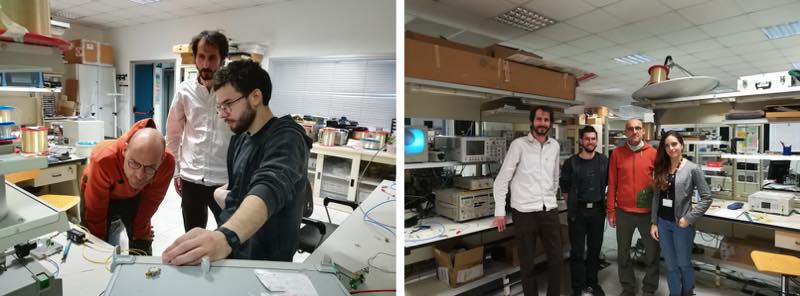
- Luis Vallejo, a PhD student from Instituto de Telecomunicaciones y Aplicaciones Multimedia, Universitat Politecnica de Valencia (Spain), made a stay in Czech Technical University in Prague (Czech Republic), under the supervision of Stanislav Zvanovec, aiming to advance method in microwave photonics, during 35 days. During his STSM he worked on photonically millimetre signal generation, signal transmission over hybrid fiber/free-space-optics (FSO) links considered as a promising solution in the cloud radio access network (C-RAN) in 5G, and evaluation of the impact of turbulences on the FSO link. Furthermore, current and future collaboration between the two research groups have been consolidated.
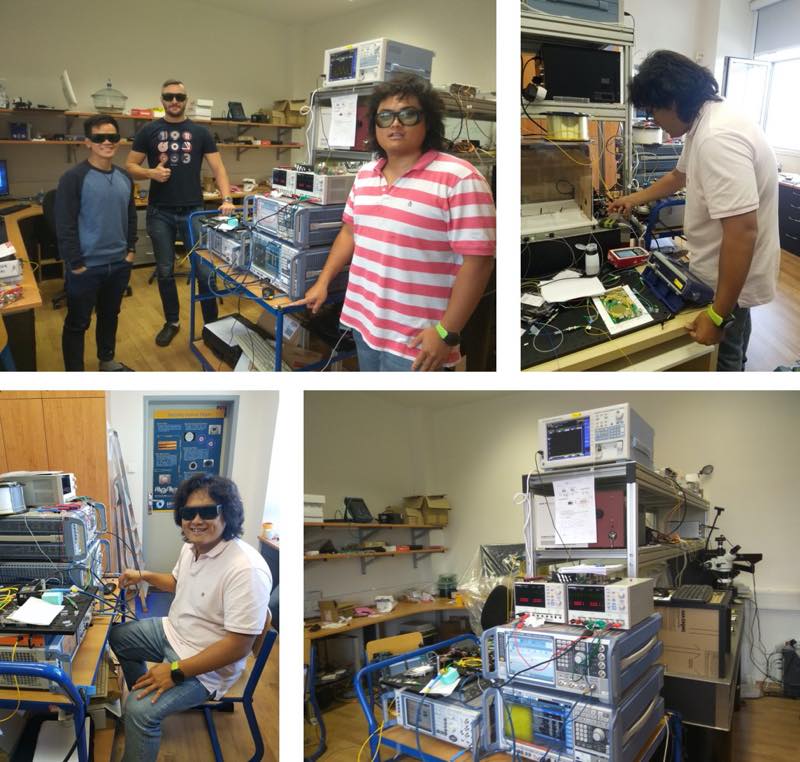
Inclusiveness Target Countries (ITC) Conference Grants:
GP2:
- Tiago Morgado, a PhD student from the Instituto de Telecomunicacoes in Aveiro (Portugal), received an ITC Conference Grant from this Action for participating in the International Conference on Transparent Optical Networks (ICTON) 2018, which took place at the Library of University Politehnica of Bucharest (Romania) from 1st to 5th of July, 2018. He presented three posters in which he showed the work that he has been developing about multimode interference (MMI) devices and its application in Photonic Integrated Circuits (PICs).
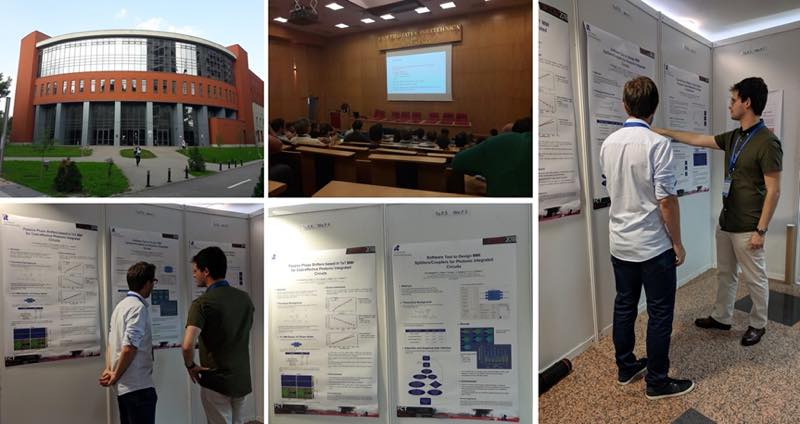
- Marek Kolenda, a PhD student from Vilnius University (Lithuania) participated in the International Workshop on Nitride Semiconductors 2018 (IWN2018), held in Kanazawa (Japan) on November 11‐16, 2018, with the poster “Carrier Extraction Enhancement at InN/p‐GaN Interface Heterojunction under Reverse Bias Voltage”, in which he presented good quality InN films, grown by pulsed MOVPE on the p-type GaN at 610°C with low defect concentration and efficient optoelectronic InN/p-GaN heterojunction was demonstrated by measuring carrier extraction under unbiased conditions, whereas applied bias voltage enhances significantly the external quantum efficiency in the ultraviolet to visible spectral region (300 – 500 nm).
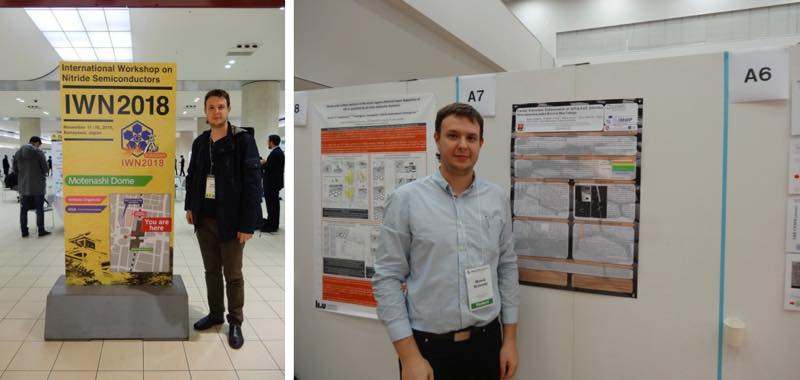
- Ágoston Schranz, a PhD student from the Budapest University of Technology and Economics (Hungary), received an ITC Conference Grant from this Action for participating in the 7th International Conference on Photonics, Optics and Laser Technology (PHOTOPTICS 2019), held at the Vienna House Diplomat in Prague (Czech Republic) between 25 and 27 February, 2019. He presented his short paper “Quantum Bit Error Rate Analysis of the Polarization based BB84 Protocol in the Presence of Channel Errors”, describing a model of how polarization rotation in optical channels can effect the error rate in the BB84 quantum key distribution (QKD) protocol.

GP3:
- Mehmet Alp Ilgaz, a PhD student from the University of Ljubljana (Slovenia), received an ITC Conference Grant from this Action for participating in the 2nd International Conference on Photonics Research (Interphotonics 2019), held at the Mirage Park Resort Hotel in Antalya (Turkey) between November 4th to 9th, 2019. He had an invited talk about “Current state of the development of the opto-electronic oscillator”. He described his research about opto-electronic oscillator (OEO) and its implementation in Radio Access Network (RAN). The topic is mainly focused on the OEO and its benefits to microwave photonics and how OEO producing microwave and millimeter wave signals with a very-low phase noise. He also described the advantages of the OEO on the photonic integrated chip and its possible implementation in RAN.

Two more applications have been recently granted:
- Asif Bilal, a PhD student from the University of Cyprus, will participate in the Photonics Europe Conference in Strasbourg (France), from March 29th to April 2nd, 2020, with an oral presentation entitled “Port analysis using S-matrix for 2D metasurface waveguide coupler in mid-IR application”.
- Antreas Theodosiou, an ECI from the Cyprus University of Technology (Limassol), will also participate in the Photonics Europe Conference in Strasbourg (France), from March 29th to April 2nd, 2020, with an invited oral presentation entitled “Femtosecond laser-written long period grating in a multimode CYTOP polymer fibre”.
The next Grant Period (GP4) will start in May, 2020. Please stay tuned for new calls!

